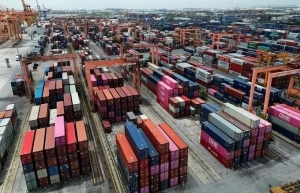Banks change investment portfolios for higher efficiency in H1
 |
| Le Hoai An, banking consultant |
How have banks adjusted their capital allocation in the first halfof this year to achieve earnings growth given the difficult economic backdrop?
In H1 of 2024, most commercial banks made significant adjustments to their capital allocation to cope with the complex fluctuations in the macro environment. One of the most notable changes was the tangible shift from investments in debt securities to a greater focus on lending activities. The proportion of securities investments to total assets decreased from 13.2 per cent at the end of Q2 2022 to around 10.5 per cent by Q2.2024. This decline reflects the banks' strategy of reallocating resources from fixed-income securities to customer lending activities.
What were the main reasons driving the banks to adjust their investment portfolio in H1?
Within 2023-2024, credit activities have been encouraged to alleviate economic difficulties and provide capital support for businesses. Meanwhile, the loan-to-deposit ratio (LDR) has continuously increased, with the LDR of total credit institutions rising from 74.35 per cent at the end of 2022 to 78.25 per cent by June 2024.
In the context of increasing outstanding loans, the main reason for the reduction in investment proportions is that banks are shifting their focus towards credit activities as the economy requires more momentum to recover post-pandemic.
Amid the strong credit growth during 2023-2024, joint-stock commercial banks have seen the highest rise in LDR. Specifically, the LDR of joint-stock banks increased from 75.36 per cent at the end of 2022 to 80.78 per cent, while the LDR of state-owned commercial banks, such as Vietcombank, BIDV, and Vietinbank, also rose from 80.6 per cent to 82.6 per cent.
Particularly as listed joint-stock commercial banks have been the driving force behind the increase in outstanding loans in H1 of 2024, changes in the structure of debt securities-one of common investment tools in banks-obviously reflect their strategy in recent periods, with banks prioritising capital for higher yield in credit activities rather than defending with other fixed-income investments.
As banks are prioritising lending activities, how is the structure of their investment portfolios changing in Q2?
The fluctuation in the proportion of trading securities within investment portfolios is a significant trend. This ratio saw a sharp increase in the final quarters of 2023, but then gradually declined in the early quarters of 2024.
This shift reflects the caution exercised by banks in adjusting their investment strategies amid fluctuations in interest rates and the challenges in the bond market.
Specifically, the proportion of debt trading securities over total debt investments decreased from 8.18 per cent at the end of 2023 to 4.81 per cent by Q2 of 2024. This trend indicates that banks are gradually withdrawing from short-term investments in debt securities, instead shifting their focus towards more long-term lending and investment activities.
These adjustments are indicative of banks' broader strategies to optimise profits as credit growth remains a primary focus this year. With credit becoming the main driver of growth, banks have been compelled to adjust their investment portfolios to allocate resources more effectively.
This shift towards long-term investments, particularly in credit, highlights the banks' intention to secure more stable and sustainable returns.
Additionally, the increasing trend of holding government bonds and certificates of deposit, coupled with a reduction in corporate bonds, underscores the banks' cautious approach. This approach aims to diversify income sources while minimising potential risks over the long term.
By prioritising safer, more liquid assets, banks demonstrate a strategic focus on stability in a volatile economic environment. These portfolio adjustments reflect a careful balancing act between pursuing growth opportunities and managing risks in a challenging market landscape.
In more detail, what specific changes have banks made to their investment portfolios in Q2?
Banks have different asset allocation strategies to adapt to changes in the macroeconomic environment and stimulating credit growth.
For state-owned commercial banks like BIDV, Vietcombank, and VietinBank, a conservative investment strategy has been maintained. The proportion of debt securities to their total assets has decreased, government bonds and certificates of deposit account for a significant portion. This reflects stability and safety in their strategy, helping to minimise volatility from interest income and ensuring stable yields in the long term.
Meanwhile, banks that specialise in corporate lending, such as MBBank and OCB, have reduced their investment in corporate bonds due to uncertainties regarding financial stability in the volatile business environment.
Conversely, banks like HDBank, MSB, and SHB have increased their holdings of debt securities, but their strategies are different. HDBank focuses on corporate bonds, while MSB and SHB prefer government bonds, indicating a cautious approach in holding assets with higher liquidity and lower risk.
Retail banks, such as TPBank, VIB, and VPBank, have significantly reduced the scale of their debt securities assets, reflecting adjustments to mitigate risks amid the complex increase of non-performing loans.
For other banks, Bac A Bank, VietBank, and Nam A Bank lead in the proportion of debt securities held to total assets. These three banks primarily hold government bonds and certificates of deposit, reflecting their cautious approach in increasing assets with stable returns. This indicates a somewhat defensive strategy by smaller banks to manage risk and optimise profits amid increasingly intense competition for credit with larger banks.
Income diversification has become an integral part of optimising capital efficiency for commercial banks. Particularly, debt securities like bonds and certificates of deposit not only provide stable income but also help preserve growth and minimise risk. The shift in the proportion of debt securities to total assets suggests that banks are allocating most of their capacity to credit growth. However, the cautious trend is clearly reflected in the gradual reduction of corporate bonds and an increased focus on more liquid and safer assets.
 | Vietnam’s H1 economic growth quite impressive: ADB Country Director Country Director of the Asian Development Bank (ADB) for Vietnam Shantanu Chakraborty has expressed his impression of the Southeast Asian nation’s economic growth of 6.4 per cent in the first half of this year. |
 | HDBank's H1 2024 profit reaches $323 billion HDBank has announced its financial statement for the second quarter of 2024, with a pre-tax profit of over $322.8 million for the first half of the year, up 48.9 per cent on-year. |
 | Bad debts remained a challenge for banks in H1 Banks' non-performing loans continued to grow in the first half of this year, with some banks even witnessing double-digit growth, whereas their loan loss reserve ratio trended downwards. |
What the stars mean:
★ Poor ★ ★ Promising ★★★ Good ★★★★ Very good ★★★★★ Exceptional
 Tag:
Tag:
Related Contents
Latest News
More News
- Tax sector wraps up 2025 and sets priorities for next year (December 25, 2025 | 14:00)
- A tipping point for digital and hybrid wealth management in Vietnam (December 23, 2025 | 13:33)
- $250 million deal targets women-owned SMEs, sustainable agriculture (December 22, 2025 | 17:40)
- Stock market posts resilient 2025 performance (December 19, 2025 | 18:17)
- Citi Vietnam receives 2025 AmCham CSR recognition (December 19, 2025 | 16:35)
- As global green supply chain reshapes, will Vietnam be left behind? (December 19, 2025 | 08:00)
- Banks gear up for massive capital increases (December 18, 2025 | 17:04)
- Securing capital and efficiency for Vietnam’s 2026-2030 growth ambitions (December 17, 2025 | 10:00)
- Energy sector in need of blended finance mechanisms (December 17, 2025 | 09:00)
- Vietnam still has room to mobilise capital for sustainable growth (December 17, 2025 | 08:57)




























 Mobile Version
Mobile Version